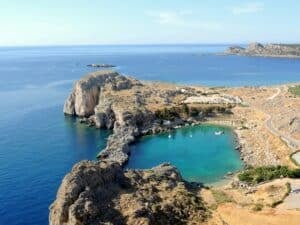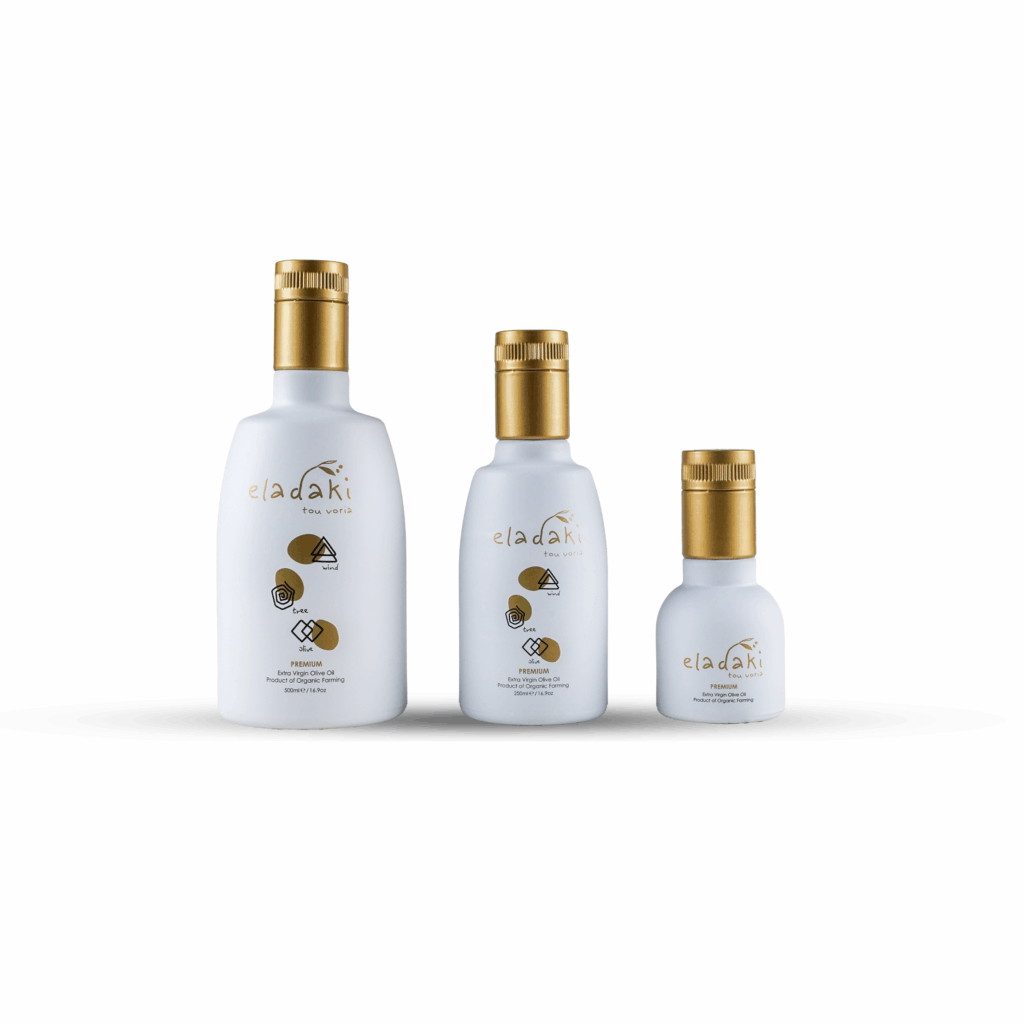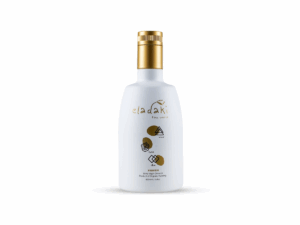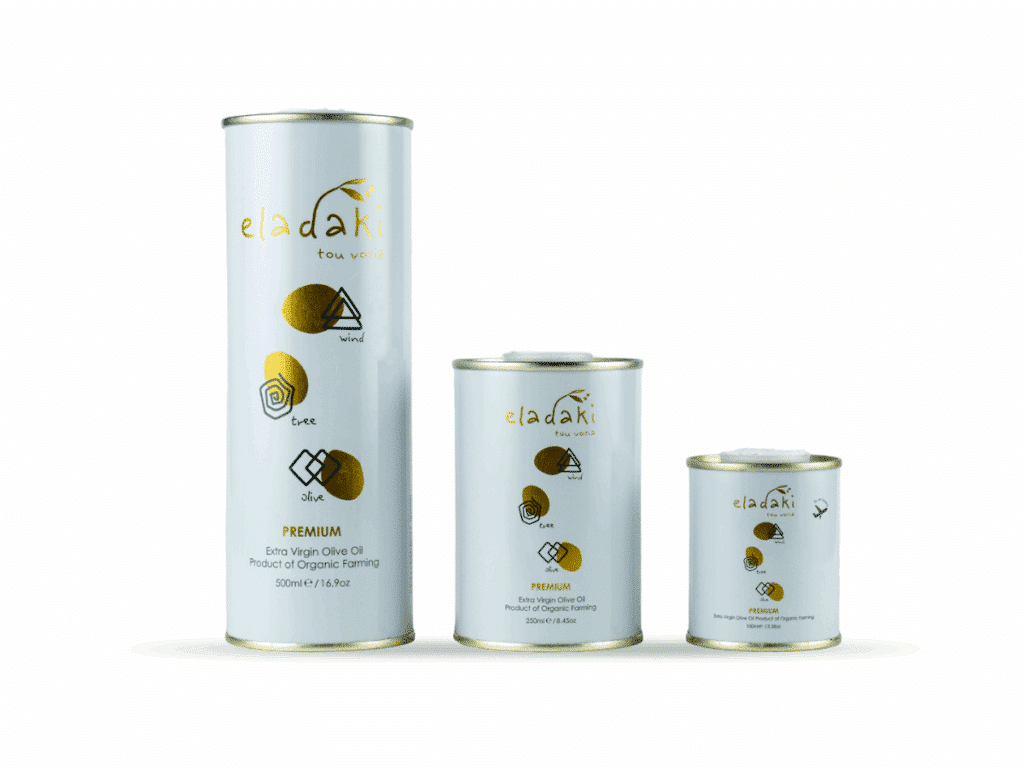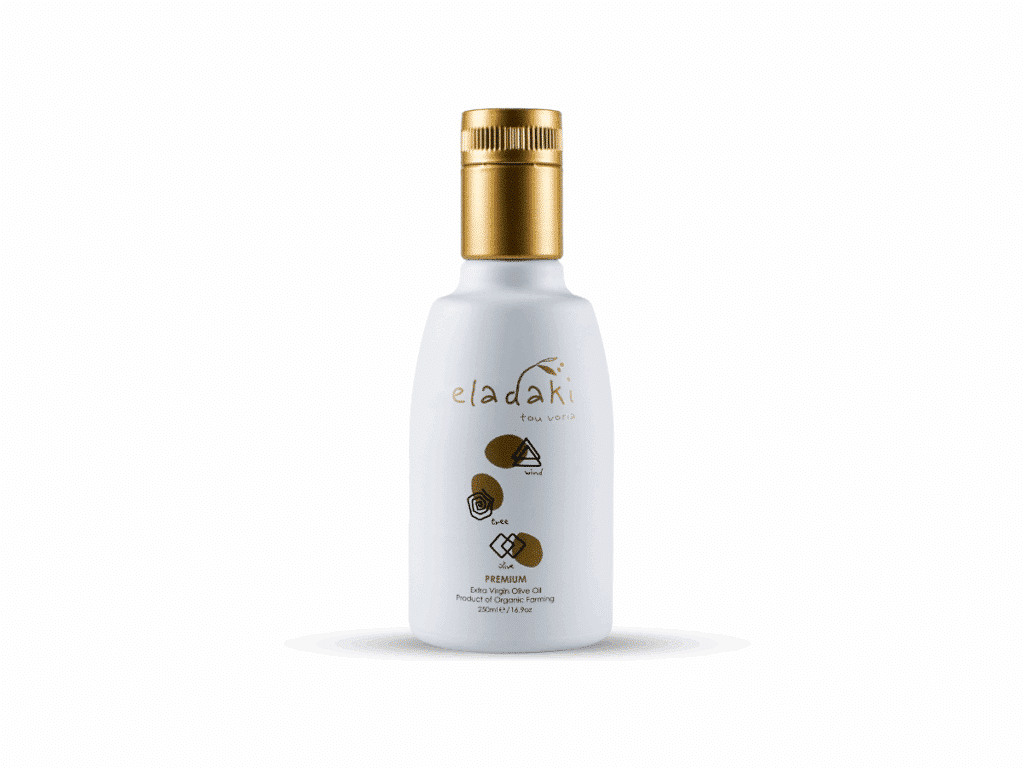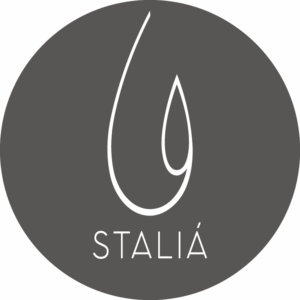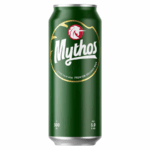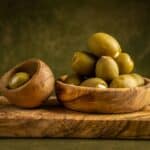Technical analysis of Eladaki olive oil - Crete
Discover the technical analysis of Eladaki olive oil. In a market saturated with superlatives, Eladaki olive oil imposes a completely different positioning. Here, there are no empty promises or stylistic effects: only technical proof, complete traceability and an assumed varietal identity. Produced from Tsounati, also known as Mastoidis, it comes exclusively from olive groves located in Rodakino, in southern Crete. This mountainous region, exposed to sea breezes, gives rise to a complex sensory profile and remarkable molecular density.
Each harvest follows a precise protocol. The olives are hand-picked from the first days of ripening, then immediately pressed in a nearby two-phase mill. Cold extraction preserves sensitive polyphenols, notablyoleocanthal, present here at high levels and recognized for its anti-inflammatory properties. Eladaki’s aromatic density and functional richness are therefore based on clear agronomic choices, combined with a rigorous extraction technique.
Certified organic under European regulations, Eladaki also meets the requirements of Regulation 432/2012, which governs health claims for olive oil. Thanks to a total polyphenol concentration above the regulatory threshold, it falls into the category of functional oils, both gastronomic and nutritional.
Finally, this study is based on data collected in February 2025 by the PharmaGnose laboratory, using the HPLC-DAD method validated by the International Olive Oil Council. It provides a comprehensive technical profile for industry professionals: chefs, juries, sommeliers and specialized importers. The objective is clear: to document, verify and promote an olive oil that doesn’t seek to seduce, but to convince.
Origin & varietal specificity: an oil faithful to its territory
An olive grove anchored in Rodakino, between sea and mountains
The Eladaki estate is located in Rodakino, in the south of the Prefecture of Rethymnon, Crete. The village overlooks the Libyan Sea, just a few kilometers from the coast. It enjoys an exceptional microclimate, with constant sea breezes tempering excess heat. There are over 300 days of sunshine a year, with a clear difference between daytime and night-time temperatures.
This thermal amplitude favors slow ripening of the olives, without excessive stress. It allows the fruit to develop a natural concentration of phenolic compounds and secondary aromas. The terroir is based on well-drained, mineral-rich clay-limestone soils, which encourage deep root development. This type of soil also supports the aromatic stability of Eladaki olive oil, vintage after vintage.
Tsounati (Mastoidis): a little-used heritage variety
Tsounati, also known as Mastoidis, is one of Crete’s oldest and rarest cultivars. It grows mainly in the mountainous areas of Rethymnon and Chania, where the climate and soils are ideal. Unlike the Koroneiki, widely used in Greece, the Tsounati produces fleshy olives with a moderate oil yield, but rich in sugar and aroma.
This variety develops a complex aromatic profile, often vegetal, sometimes floral, with a fatty texture on the palate. The lingering taste is mild, but well defined. Thanks to this natural delicacy, Tsounati will appeal to lovers of expressive yet balanced oils.
However, this demanding cultivar requires very careful harvesting, as well as rapid extraction after picking. Even the slightest mistake can undermine its potential. Eladaki takes up this challenge with rigor, cultivating Tsounati in monoculture, a rare choice. This approach gives the oil a singular character, difficult to find in standardized blends.
100% organic cultivation, certified throughout Europe
The entire Eladaki farm is run according to the rigorous standards of organic farming, validated by dual certification: European label (EU Organic) and Swiss Organic, the latter being recognized for its stricter requirements on certain analytical thresholds. No synthetic pesticides, herbicides or fungicides are used, guaranteeing the total absence of chemical residues in the soil, on the trees or in the final oil.
Cultivation practices are based on a proven agroecological foundation: non-invasive mechanical weeding, manual inter-row maintenance, and exclusively organic fertilization using plant compost and pruning residues reused on site. The aim is not just productivity, but the long-term biological resilience of the olive grove.
Grower Kseroudakis Georgios adopts an extensive cultivation philosophy, deeply rooted in Cretan tradition. His approach values functional biodiversity: natural auxiliaries (pollinating insects, ladybugs, soil microfauna) are protected, and spontaneous flora – wild thyme, fennel, clover – is never eradicated, but integrated as a living ecological barrier. This cultivation method creates a stable balance between tree, soil and environment, giving each vintage a faithful expression of the Rodakino terroir.
Harvesting & extraction: precision, speed and respect for phenolic compounds
Early, selective harvesting of fresh olives
The olives for Eladaki oil were harvested between October 12 and 28, 2024, at the height of the earlyharvest period. At this stage, the fruit is predominantly green, sometimes turning slightly purplish, corresponding to the optimum physiological stage for the concentration of bioactive polyphenols.
This deliberately early harvest is not aimed at maximum yield, but at high functional value and a fine, vegetal aromatic profile. Harvesting too late would dilute phenols, accentuate bitterness in the throat, and reduce freshness of taste. Here, the objective remains clear: to produce a dense, elegant and stable oil.
Harvesting is carried out by hand, exclusively on the tree, without the use of ground nets or mechanical vibrators. This method guarantees the integrity of the fruit, while limiting cellular trauma that accelerates enzymatic oxidation (lipoxygenase). What’s more, immediate post-harvest sorting eliminates wounded, pitted or fermented olives, ensuring a healthy, homogeneous batch, perfectly in line with qualitative cold extraction standards.
This strategic harvesting period, combined with a demanding manual protocol, forms an essential foundation for the final quality of Eladaki, both analytically and sensorially.
Same-day extraction in a two-stage mill
Pressing takes place on the day of harvest, without intermediate storage, guaranteeing the enzymatic freshness of the fruit and limiting primary oxidation reactions. Eladaki oil is extracted in a two-phase mill, a strategic technological choice for demanding producers.
Unlike three-phase systems, which require the addition of hot water during decantation, this technology eliminates all aqueous dilution. It preserves all water-soluble compounds, in particular high-functional value phenols such as oleacein, hydroxytyrosol or ligstroside aglycones. These molecules, often partially lost in standard processes, are here integrated into the oil, enhancing its antioxidant density and organoleptic complexity.
The extraction protocol strictly follows the recommendations of the International Olive Oil Council (IOC). Crushing is carried out within a short time of receipt, and blending is maintained in a controlled atmosphere at a temperature below 27°C. This thermal condition is essential to avoid thermal degradation of volatile aromas and heat-sensitive phenols.
The oil is separated by direct decantation, without an aqueous phase, resulting in a modest but qualitative yield. The objective is not volume, but the molecular integrity of the final product.
This extraction method guarantees Eladaki’s high concentration of bioactive compounds, intact plant freshness and natural oxidative stability, all of which are essential conditions for its classification as a premium functional oil.
Protectively packaged in an opaque container
Once the oil has been extracted, it is immediately filtered, without lengthy decantation, to eliminate any trace of water, pulp or plant micro-particles. This technological choice aims to prevent residual fermentation and limit hydrolysis processes, the main factors in premature degradation. In this way, filtration acts as an active barrier against aromatic loss and increased acidity.
The oil is then stored in food-grade stainless steel tanks, under an inert atmosphere (nitrogen), at a regulated temperature (16-18°C). This protocol drastically reduces exposure to oxygen, prevents oxidative polymerization of polyphenols, and stabilizes the volatile compounds responsible for the fruity aroma typical of the Tsounati variety.
Final packaging is in opaque metal bottles, a strategic choice validated by photo-oxidation research. This container blocks UV rays and protects the oil from thermal and light fluctuations, two major variables in post-bottling sensory alteration.
This triple lock (rapid filtration, inert storage, technical bottle) ensures Eladaki’s long-term sensory and analytical stability, enabling specialist distributors, competition juries and high-end retailers to work with consistent batches, even several months after bottling.
Technical analysis of Eladaki olive oil
In-depth polyphenol analysis: architecture of bioactive compounds
A method that complies with IOC & EFSA standards
The polyphenolic analysis of sample OLE_1814 “Eladaki tou Voria” was entrusted to the independent laboratory PharmaGnose, renowned for its work on bioactive compounds in olive oil. The study was conducted in February 2025, using the official COI/T.20/Doc. No 29, approved by the International Olive Oil Council.
In concrete terms, the analysis protocol is based on ultrasound-assisted liquid-liquid extraction, guaranteeing efficient recovery of water-soluble phenolic compounds. Compounds are then separated by high-performance liquid chromatography coupled to a diode array detector (HPLC-DAD), a reference technique for the specific quantification of phenols in complex matrices.
Using this method, the laboratory accurately identifies and quantifies the main biophenols in Eladaki oil, including :
Hydroxytyrosol and tyrosol, powerful natural antioxidants
Oleacein and oleocanthal, key molecules for their anti-inflammatory activity
Oleuropein and ligstroside aglycones, characteristic of early-harvest oils
Flavonoids luteolin and apigenin, involved in plant bitterness and oxidative stability
Pinoresinol, a cardioprotective lignan
This comprehensive profile goes far beyond the simple measurement of “total polyphenols” often used in marketing pitches. It allows us to finely characterize Eladaki’s biochemical signature, providing useful data for competition juries, dieticians and health-nutrition professionals.
Numerical results for major compounds
The polyphenolic composition of the Eladaki sample shows a remarkable balance between intensity and functional structure. The assay carried out by PharmaGnose reveals the following concentrations:
Oleocanthal: 166.17 mg/kg – flagship anti-inflammatory molecule, often compared to ibuprofen for its inhibitory action on COX-1 and COX-2 enzymes
Oleacein: 69.80 mg/kg – powerful antioxidant, associated with enhanced cardiovascular protection
Hydroxytyrosol: 2.84 mg/kg – water-soluble antioxidant, renowned for its rapid bioavailability
Tyrosol: 9.16 mg/kg – essential precursor of complex phenols, with synergistic effect
These data, in particular the sum oleocanthal + oleacein (235.97 mg/kg), confirm Eladaki’s eligibility for the health claim authorized by European regulation (EU) 432/2012. This claim, rare in the food sector, states:
“The polyphenols in olive oil help protect blood lipids against oxidative stress.
So Eladaki goes beyond mere sensory criteria. It falls into the category of functional oils, recommended not only for their taste but also for their nutritional benefits, validated by precise scientific data.
Technical analysis of Eladaki olive oil: Interpretation and measurable anti-inflammatory power
The high concentration of oleocanthal (166.17 mg/kg) and oleacein (69.80 mg/kg) clearly distinguishes Eladaki bioactively. These two major secoiridoids, derived from the enzymatic degradation of oleuropein and ligstroside, play a central role in the functional effects of olive oil.
Firstly, oleocanthal acts as a natural anti-inflammatory. Its mechanism of action inhibits COX-1 and COX-2 enzymes, in a similar way to low-dose ibuprofen. This action has been widely documented in scientific literature.
At the same time, oleacein completes this profile with its antioxidant, antimicrobial and neuroprotective activity. It also contributes to the oil’s oxidative stability, prolonging its functional life.
The ratio of oleocanthal to total polyphenols here exceeds 45%, a rare threshold. This high ratio indicates a specific phenolic density, typical of oils described as “functional”. These oils are particularly sought-after by health professionals, nutritionists and competition juries focusing on preventive health.
Last but not least, this coherent and powerful polyphenolic structure places Eladaki in a higher technical, nutritional and regulatory category, where the label faithfully reflects the actual composition.
Sensory profile and organoleptic signature: the soft voice of Tsounati
An oily, elegant texture
On opening, Eladaki presents a brilliant golden color, highlighted by subtle green reflections, typical of Tsounati’s early harvests. This shade confirms the freshness of the pressing and the stability of the chlorophyll pigments, preserved thanks to gentle extraction and opaque packaging.
On the palate, the texture is unctuous and dense, without excessive viscosity. Fluidity remains under control, leaving an oily yet perfectly digestible sensation. This structure reflects the richness of medium-chain triglycerides, typical of first-press oils from fruit picked at low maturity.
The Mastoidis (Tsounati) variety, naturally low in free acidity, gives the oil an immediate roundness. This sweet, almost buttery attack is balanced by a well-integrated herbaceous freshness, without any heaviness or aromatic saturation.
As a result, Eladaki offers a rare balance between tactile density, sensory accessibility and vegetal freshness, a precious characteristic for a tasting oil or an oil for cold gastronomic use.
Technical analysis of Eladaki olive oil: Muted bitterness, clean, persistent spiciness
Eladaki’s taste balance is based on a delicate but persistent bitterness, immediately perceptible on the palate. This well-integrated bitterness structures the tasting experience without overpowering the vegetal aromas. Its origin lies in the presence of secoiridoids such as oleuropein aglycone and associated flavonoids, extracted with precision thanks to short, low-temperature blending.
Shortly afterwards, a frank spiciness emerges in retro-olfaction, characteristic of a high oleocanthal content (166 mg/kg). This compound, abundant in Eladaki, triggers a sensation of dry heat in the throat, without aggressiveness, but with remarkable clarity.
The spiciness builds gradually, giving each aroma time to reveal itself. This controlled kinetics of spiciness illustrates a well-balanced extraction, where bioactive compounds are expressed without brutality.
Eladaki achieves a level of precision that is rare for an oil produced from the Tsounati variety. This finesse in the management of taste intensities – bitterness, spiciness, roundness – makes for a sensory experience that is clear, elegant and technically impressive.
Aromatic palette: fresh herbs and green almonds
On the nose and palate, Eladaki develops a clean, refined aromatic profile, indicative of its early harvest. Upon opening, notes of crumpled olive leaf dominate, quickly followed by a frank expression of freshly cut grass. These primary aromas, produced by lipoxygenase activated during cold blending, confirm a gentle extraction that respects volatile compounds.
On the mid-palate, a hint of green almond unfolds, providing a soft, vegetal structure. This note, characteristic of the Tsounati variety, reinforces the sensation of freshness and supports the elegance of the overall profile.
A subtle touch of sweet bell pepper adds complexity. This rare aromatic marker in Tsounati suggests a particular terroir and a mastery of controlled oxidation of volatile precursors.
Finally, the finish opens on a discreet floral note, between dried chamomile and caper blossom. This olfactory trail directly evokes the Rodakino terroir, between garrigue, marine influences and rocky slopes, offering a unique and memorable olfactory signature.
Technical analysis of Eladaki olive oil: An oil with refined gastronomic potential
This sensory profile, at once clean, vegetal and elegant, positions Eladaki among the most versatile finishing oils in its category. Its controlled sweetness, combined with subtle bitterness and measured spiciness, makes it highly adaptable in the kitchen.
It enhances fine raw vegetables (fennel, black radish, new carrots), warm salads based on legumes or ancient cereals, and white fish, steamed or carpaccioed. Its natural balance makes it an excellent complement to fresh cheeses – feta, ricotta, Greek yoghurt – but also to citrus or honey milk desserts.
What’s more, its oxidative stability means it can withstand gentle cooking (< 160°C), while retaining its plant-based aromas and polyphenolic signature. It is ideal for vegetable risottos, soft-boiled eggs, or warm sauces in oil.
Finally, its fluid texture and discreet aromatic signature make it ideal for complex vinaigrettes, where the balance between acidity and bitterness calls for an oil that is legible but not dominant. Eladaki is aimed at enlightened wine lovers, but remains accessible to a wider public, thanks to its consistency of taste, its absence of flaws, and its sincere expression of Cretan terroir.
Technical analysis of Eladaki olive oil
Secondary components and bioactive complexity: beyond the dominant polyphenols
An oil rich in flavonoids and lignans
Chromatographic analysis of sample OLE_1814 reveals a phenolic composition of rare complexity. In addition to the main compounds – oleocanthal, oleacein, hydroxytyrosol – the PharmaGnose laboratory has identified several essential secondary polyphenols.
They include two major flavonoids: luteolin and apigenin. Although present in modest concentrations, these molecules act as natural co-antioxidants. They trap free radicals, stabilize the lipid matrix and slow fatty acid oxidation. On the palate, they reinforce vegetal bitterness while refining aromatic persistence.
Analysis also revealed the presence of specific lignans: pinoresinol and acetoxypinoresinol. These compounds, derived from the secondary metabolism of olives, have been documented for their protective effects on the cardiovascular system. They appear mainly in first-press oils, cold-extracted and unrefined.
Eladaki does not limit itself to a standard phenolic profile. It develops an extensive molecular signature, difficult to achieve in oils from more intensive processes or high-yielding cultivars. This molecular richness, though discreet to the taste, gives the oil remarkable stability, sophisticated aromatic expression and enhanced nutritional potential.
Technical analysis of Eladaki olive oil: A complex, balanced architecture
HPLC-DAD chromatogram data reveal a harmonious distribution of phenolic families, a sign of exceptional biochemical balance. The marked presence of secoiridoids – notably oleocanthal (166.17 mg/kg) and oleacein (69.80 mg/kg) – forms the functional backbone of Eladaki oil. These molecules provide the most well-documented anti-inflammatory, antimicrobial and neuroprotective effects.
At the same time, simple phenols such as tyrosol (9.16 mg/kg) and hydroxytyrosol (2.84 mg/kg) give the oil a classic but stable antioxidant base. These compounds are more water-soluble, and therefore more sensitive to losses during extraction. Their presence in measurable quantities attests to a careful, non-dilutive crushing process.
In addition, flavonoids (luteolin, apigenin) and lignans (pinoresinol, acetoxypinoresinol) enrich the oil’s functional spectrum. Their synergistic action with secoiridoids enhances oxidative stability, modulates bitterness and prolongs aromatic longevity.
This type of molecule-by-molecule distribution is rarely seen in oils from intensive varieties such as Koroneiki. In contrast, Tsounati – an ancient, non-hybridized cultivar – develops a polyphenolic architecture that is less standardized, more nuanced, and therefore more interesting from an organoleptic and therapeutic point of view.
Synergistic potential and enhanced protective action
Eladaki’s molecular composition is not limited to the addition of active ingredients. It’s based on a genuine functional synergy, with each group of compounds reinforcing the action of the others. This cross-interaction between molecular families generates an amplification effect rarely seen in standardized oils.
Secoiridoids, notably oleocanthal and oleacein, provide a solid anti-inflammatory base. Their presence, well documented in the literature, targets key enzymes such as COX-1 and COX-2, involved in chronic inflammatory processes.
In addition, flavonoids such as apigenin and luteolin play a modulating role. They are involved in cell signalling, free radical scavenging and the regulation of inflammatory mediators. This secondary action enhances the overall efficacy of secoiridoids.
Pinoresinol lignan, although present in low doses, contributes to the oil’s vasculoprotective effect. Its interaction with oleacein could promote blood fluidity and the resistance of vascular membranes.
Eladaki stands out for its enhanced therapeutic potential. Recent publications highlight the role of oleocanthal + apigenin in modulating inflammation, or oleacein + pinoresinol in preventing vascular oxidative stress.
A distinctive chemical identity for competitions and juries
This biochemical complexity, rigorously measured by an accredited laboratory, gives Eladaki an undeniable technical value. Each molecule identified – secoiridoids, flavonoids, lignans – makes up a unique structure, difficult to reproduce outside its original context.
In this way, Eladaki goes far beyond the simple “polyphenol score”. It embodies a complete, stable and reproducible analytical signature, shaped by the Tsounati variety, the Rodakino terroir and an irreproachable extraction method.
Highly technical international competitions and specialized juries are looking for just this type of profile. An oil that tells the story of its origins through its molecules, and provides concrete proof of functional quality and sensory finesse.
Certifications, recognition and positioning: the credibility of an exemplary product
Technical analysis of Eladaki olive oil: Dual organic certification: EU & Swiss Organic
Eladaki benefits from double organic certification, a rare guarantee of rigor and international conformity. Firstly, the Bio UE label, issued in accordance with regulation (EU) 2018/848, certifies the total absence of synthetic pesticides and GMOs, and imposes sustainable management of soil, water and biodiversity.
Swiss Organic certification completes this regulatory framework. It is distinguished by stricter residue thresholds, enhanced traceability, and greater demands for consistency in the agricultural model.
This double recognition positions Eladaki among the oils suitable for export to the most demanding markets. It meets the criteria of specialist distributors in Switzerland, Germany, Scandinavia and Canada, where organic standards and documentary transparency are scrutinized at every stage.
Compliance with the European health claim
Eladaki has a certified concentration of 361 mg/kg of total polyphenols, measured using the HPLC-DAD (High Performance Liquid Chromatography with Diode Array Detection) method, recognized by the International Olive Oil Council. This level far exceeds the regulatory threshold of 250 mg/kg required by European Regulation (EU) 432/2012, a sine qua non condition for displaying the following health claim:
“The polyphenols in olive oil help protect blood lipids against oxidative stress.
Only oils tested in an accredited laboratory, according to IOC protocols, can claim this label on their commercial materials. Eladaki therefore meets all the technical and regulatory requirements to position itself as an oil with high functional value.
This status brings triple legitimacy: scientific (measured and verifiable data), nutritional (recognized antioxidant effect), and commercial (differentiating argument for specialist retailers, organic pharmacies, dieticians and exporters to regulated markets).
A growing reputation among connoisseurs
Although Eladaki does not yet feature in international competition lists, it has already established itself as an emerging benchmark in the select circle of Cretan producers committed to analytical transparency and total traceability. Its approach is based on solid foundations: heritage variety (Tsounati/Mastoidis), early extraction, HPLC-DAD certified analysis, and strict compliance with European regulation 432/2012.
Rather than seeking immediate visibility through medals, Eladaki favors an in-depth strategy based on objective, reproducible and accessible data. This technical positioning, aligned with the expectations of specialist juries, nutritional chefs and demanding importers, makes it perfectly eligible for highly technical competitions such as Olive Japan, BIOL (Italy), London IOOC or Olympia Awards for Health & Nutrition.
Ultimately, its analytical rigor, consistent bioactive profile and sensory coherence distinguish it more than overplayed storytelling ever could. This is precisely the type of oil that niche distributors, olive oil cavistes and sommeliers-in-training are looking for today.
Technical analysis of Eladaki olive oil
Traceability & typicity: an identifiable, reliable and reproducible oil
A clear, verifiable geographical origin: Technical analysis of Eladaki olive oil
Eladaki oil comes from a family farm in Rodakino, south of the prefecture of Rethymnon, Crete. This coastal village, exposed to the sea breeze and isolated from intensive production areas, offers an ideal terroir for cultivating the Tsounati variety using extensive practices.
The producer has associated each batch with a clear analytical identifier: OLE_1814assigned by the independent laboratory PharmaGnose. This code also appears under the trade name “eladaki tou voria”, mentioned in the official report. In this way, traceability is not limited to a verbal declaration, but is based on verifiable documentation, integrated into the production process.
This structural transparency is a major asset. International competitions, premium retailers and health professionals demand perfect consistency between the contents of the bottle, the product data sheet and the published analysis results. Eladaki ticks all these boxes, positioning itself as a highly credible oil, even without any apparent track record.
A rare variety that marks the profile
The Tsounati (or Mastoidis) variety, grown here in strict monoculture, gives Eladaki a highly distinctive varietal signature. This cultivar, endemic to Western Crete, is difficult to transpose outside its native soil. It develops a singular chemical architecture that runs counter to the standards of modern intensive oils.
Unlike Arbequina or Koroneiki, which are often more standardized, Tsounati has a soft, slightly bitter mouthfeel, but is paradoxically rich in oleocanthal. This dissociation between phenolic power and sensory delicacy is a rare profile, prized by experts.
In this way, Eladaki oil becomes identifiable to the blind, even among dozens of samples. Its vegetal aromatic expression, its low bitterness level, and its progressive rise in spiciness This makes it easier to gain recognition as a sensory panel, especially in international competitions.
Technical analysis of Eladaki olive oil: analysis report enclosed, standardized method, traceability assured
The analysis provided for Eladaki – available in PDF format at the end of this data sheet – meets all the methodological requirements laid down by the International Olive Oil Council (IOC). It is based on a validated HPLC-DAD protocol, applied by the PharmaGnose laboratory, renowned for its rigor in the field of high functional value oils.
Each biophenol measured is listed with its precise value, including oleocanthal, oleacein, tyrosol and hydroxytyrosol. This analytical granularity far exceeds generic commercial standards. What’s more, the certificate includes key elements: full name of the producer (Kseroudakis Georgios), coordinates of the production site (Rodakino), extraction method (two-phase mill), exact date of harvest, and nature of cultivation (double-certified organic).
In this way, any statement displayed on the label can be verified at source. Importers, competition juries, inspection bodies and distributors can easily cross-reference the data with the final product. This technical transparency, still rare in the world of artisanal oils, positions Eladaki as a credible reference – far beyond vague claims such as “Mediterranean olive oil”.
Gastronomic uses: culinary elegance and functional versatility
Not just a finishing oil
Eladaki olive oil fully expresses its complexity when used raw, as a finishing touch, on hot or cold dishes. Its smooth attack and fluid texture immediately reveal Tsounati’s varietal signature: a marked roundness on the palate, without heaviness.
At the same time, a controlled vegetal bitterness develops, quickly balanced by a discreet spiciness in the throat, linked to the high oleocanthal content (166 mg/kg). This gradual aromatic build-up creates a stable taste structure, conducive to delicate pairings.
Eladaki is ideal with fine raw vegetables such as fennel, black radish and new carrots, where it provides a gentle, structuring counterpoint. It also enhances fresh sheep’s milk cheeses, cold soups (zucchini velouté, green tomato gazpacho), or steamed fish with delicate flesh.
In all these cases, it acts as an olfactory and gustatory binder, without ever masking the main ingredients. It’s precisely this subtlety, between aromatic finesse and nutritional functionality, that makes it invaluable in catering or guided tasting.
Suitable for gentle cooking thanks to its stability
Contrary to popular belief, Eladaki can withstand gentle to moderate cooking, up to 160-170°C. Its biochemical composition, based mainly on monounsaturated fatty acids (oleic acid), gives it excellent resistance to thermal oxidation.
What’s more, its high concentration of antioxidant compounds – notably oleocanthal and oleacein – reinforces this stability in a heated environment. Unlike some refined or polyphenol-poor oils, Eladaki retains its essential nutritional properties even after a gradual rise in temperature.
As a result, it can be safely incorporated into hot dishes, such as stews with herbs, risottos with ancient cereals (spelt, barley), or slow-fried vegetables. It not only provides antioxidant protection during cooking, but also a discreet aromatic signature that structures the dish without altering its balance.
It is precisely this versatility, whether raw or heated, that positions Eladaki as a complete functional oil, capable of meeting the gustatory, technical and nutritional requirements of contemporary cooking.
Recommended chords for restaurants
For chefs, Eladaki is an oil that brings out the best in raw produce. It works very well with :
Grilled or steamed vegetables (carrots, zucchini, beets)
Ancient cereals (spelt, barley, quinoa)
Free-range eggs (omelettes, poached eggs)
Dairy desserts (Greek yogurt, light panna cotta)
Iodized products (raw tuna, sea bream, bottarga)
It is particularly appealing to locavore restaurants, organic delicatessens and oil bars, which are looking for rare, traceable, elegant yet expressive references.
Integral ecology and biodiversity: the olive grove as a living ecosystem
Technical analysis of Eladaki olive oil: a certified organic crop rooted in the Cretan landscape
The Eladaki farm rigorously applies the principles of certified organic farming, in accordance with European and Swiss specifications. No synthetic pesticides, herbicides or chemical fertilizers are used at any stage of cultivation. The grower favors gentle practices that respect soil structure and local biodiversity.
Work is carried out exclusively by hand or using non-invasive mechanical techniques. The aim is clear: to preserve the soil’s microbial activity, a fundamental pillar of natural fertility. To feed the olive trees, local compost is used, enriched with natural manure and plant residues from winter pruning.
Each tree evolves according to its own physiological rhythm. No over-stimulation is imposed. The vegetative cycle remains intact, guaranteeing both low environmental pressure and optimal agronomic quality. This reasoned approach favors genuine varietal expression, a natural concentration of bioactive compounds, and inter-annual chemical stability difficult to achieve in intensive cultivation.
An olive grove in harmony with flora and fauna
Around the olive trees, native plants are never eradicated but integrated into a controlled ecological management strategy. Clover, wild fennel, Cretan asparagus and caper bloom freely between the rows, forming a permanent ground cover. This natural carpet plays a multifunctional role: it limits water evaporation, improves soil porosity, slows erosion and stimulates underground biological activity.
At the same time, this spontaneous flora is home to a rich biodiversity. Pollinating insects, wild bees and ladybugs find refuge in these varied habitats. Breeding birds such as the melanocephalus warbler and the goldfinch are regularly observed, testifying to the orchard’s ecological vitality.
This cohabitation of plant and animal species naturally regulates pests. It also strengthens the olive grove’s resilience to drought, by reducing the water stress suffered by the trees. This extensive management model, particularly suited to semi-arid Mediterranean zones, is fully in line with an agro-ecological approach, combining agronomic performance and ecosystem balance.
A replicable but demanding model
This agroecological management method is based on a continuous presence in the olive grove. The grower observes every evolution, anticipates imbalances and adapts his interventions in real time. This rigorous approach requires a great deal of work per hectare, far more than mechanized models. But the results are well worth the effort.
On the one hand, the trees develop a remarkable vitality. Their root systems dig deep, their foliage remains dense, and their production cycle aligns naturally with the seasons. This plant health translates into an oil that is more stable, richer in bioactive compounds, and with a consistent organoleptic profile year after year.
What’s more, our environmental footprint is exceptionally low. No chemical treatments, zero intensive irrigation, local recycling of organic matter: every choice we make limits our ecological impact.
So, for taste professionals, competition juries and committed distributors, Eladaki embodies much more than just an oil. It becomes the faithful reflection of a Mediterranean landscape, of a mastered agricultural gesture, and of a global coherence between terroir, method and the producer’s vision.
Technical analysis of Eladaki olive oil
Top-of-the-range positioning & technical credibility: an asset for exports and competitions
A product ready for the most demanding markets
Thanks to its dual “Bio UE” and “Swiss Organic” certification, Eladaki meets the strictest standards of quality and sustainability. HPLC-DAD analysis, carried out according to the official standards of the International Olive Oil Council (IOC). This guarantees rigorous scientific traceability of its phenolic profile. In addition, packaging in opaque metal bottles effectively protects the oil from photo-induced oxidation. This ensures the stability of aromas and antioxidants.
From a regulatory point of view, Eladaki ticks all the boxes required by high-end international distributors. Its technical file includes: an analytical certificate issued by an independent laboratory, a perfectly traced geographical origin. But also a producer identified by name and sample code, as well as full legal compliance with the health claim set out in European regulation 432/2012.
As a result, this oil is perfectly eligible for export to premium markets outside the European Union, including Switzerland, Canada, Japan and Germany. It is a strategic option for specialized importers, organic delicatessens and committed boutiques seeking analytical proof, product consistency and flawless regulatory compliance.
Technical analysis of Eladaki olive oil: A differentiating lever for juries and competition panels
In a landscape dominated by standardized profiles based on Koroneiki or Arbequina, Eladaki stands out for its atypical sensory proposition and identity. Its varietal roots in Cretan Tsounati, still marginal on the international scene, give it an immediately recognizable taste signature. Thanks to a polyphenolic architecture measured at 361 mg/kg in total, including 166 mg/kg of oleocanthal. The oil develops a structured, vegetal roundness, coupled with a gradual, controlled spiciness that culminates in a non-aggressive finish.
Moreover, its buttery texture, low natural acidity and clean aromatic profile (fresh grass, green almond, caper flower) make it easy for professional panels to identify it blind. This kind of gentle complexity is rarely achieved with such clarity. It is precisely what juries are looking for in competitions with a dual approach – nutritional and gastronomic. As a result, Eladaki is a natural short-lister in demanding competitions such as the Olympia Awards (health and functional), BIOL (organic and sensory), AVPA (gastronomy) or Olive Japan (premium Asian markets).
It is also a much-appreciated benchmark in tastings conducted by sommeliers specializing in olive oil, where varietal legibility and analytical consistency are major differentiating criteria.
Proof of seriousness beyond storytelling
More than just brand building, Eladaki is based on a clear and rigorous analytical approach. In a market saturated with vague claims, Eladaki relies on certified documentation. It is based on HPLC-DAD analyses carried out by an accredited laboratory. Thanks to this method, each polyphenolic molecule is precisely identified, reinforcing the product’s legitimacy.
What’s more, this approach goes far beyond the simple overall score. It provides specific data on oleocanthal, oleacein, tyrosol and hydroxytyrosol. All these molecules are linked to recognized beneficial effects, such as vascular protection and anti-inflammatory action. This makes Eladaki a credible oil in both nutritional and functional terms.
In addition, the analytical certificate mentions the producer, harvest date, exact place of production and extraction conditions. This comprehensive information guarantees total traceability, eagerly awaited by specialist importers, sommeliers and international competition juries.
Finally, this transparency inspires genuine trust. Unlike other marketing-based products, Eladaki offers total consistency between content, discourse and scientific proof. This level of rigor reassures professional prescribers, who are looking for an olive oil capable of justifying its qualities, with figures to back it up.
Frequently asked questions
What's the difference between sweet olive oil and pepper oil?
A mild oil has low bitterness and moderate or no spiciness. It is suitable for those who prefer rounder flavors. A peppery oil, like Eladaki, has a slight heat in the throat due to natural polyphenols, notablyoleocanthal. This spiciness is not a defect, but a sign of freshness and antioxidant richness.
Can olive oil like Eladaki be used for everyday cooking?
Yes. Although premium, Eladaki is suitable for everyday use, even when hot. Thanks to its stable fatty acids and high concentration of antioxidants. It stands up well to gentle cooking (sautéed vegetables, simmered dishes) while retaining its nutritional and taste qualities.
Why choose an olive oil from a single producer rather than a blend?
An oil from a single estate like Eladaki guarantees total traceability, a stable taste identity, and compliance with analytical standards specific to a single variety, a single region, a single mill. Unlike an industrial blend, it expresses the terroir and the hand of the producer, like an estate wine.
Is Eladaki oil filtered or unfiltered?
It is filtered immediately after extraction, which prolongs its shelf life and stabilizes its aromatic compounds. A filtered oil like Eladaki is clearer, less prone to fermentation over time, and ideal for retailers or chefs looking for consistent quality all year round.
What does "HPLC-DAD analyzed" mean on the label?
